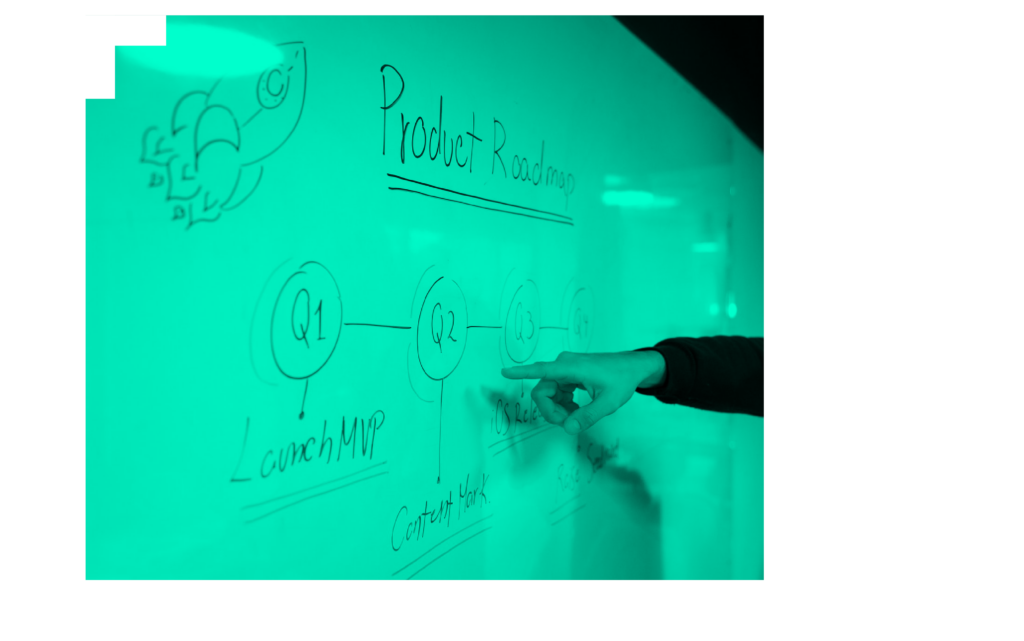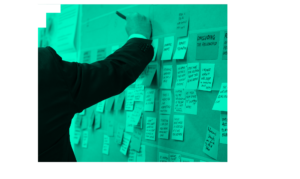
What Is ‘Agile Scrum’?
You will have heard the term (or you’ve done well to avoid it!). It’s become one of the real industry buzzwords in recent years: “We’re going agile”. But what does it actually mean?
In this article I’ll explain what defines ‘agile scrum’, what distinguishes it from other frameworks and what benefits it can offer to you and your project.
‘Going Agile’
‘Agile’ project management is actually more a philosophy than a framework.
It came about 20 years ago when 17 software engineers, disillusioned with the state of software development, had their Jerry Maguire moment and drafted ‘The Manifesto For Agile Software Development’. And with it changed the path of software development (indeed, project management) forever.
‘The Manifesto For Agile Software Management’
“We are uncovering better ways of developing software by doing it and helping others do it. Through this work we have come to value:
- INDIVIDUALS AND INTERACTIONS over processes and tools
- WORKING SOFTWARE over comprehensive documentation
- CUSTOMER COLLABORATION over contract negotiation
- RESPONDING TO CHANGE over following a plan
That is, while there is value in the items on the right, we value the items on the left.”
In many ways, it’s a philosophy that developed to meet the needs of modern, more dynamic development environments, able to adjust more readily to their adaptations and evolution.
It is defined by its flexibility, adaptability and it’s iterative design and build processes. Defined, in fact, more by the improvisations that happen outside of the original plan: the tasks conceived, assigned, executed or changed as the situation demands them along the way.
Its core principle is client-centricity and ‘people first’. And that’s where the ‘scrum’ part comes in.
AGILE SCRUM
The scrum is a subset of Agile, and it’s the principles and processes followed here to deliver the final product. What distinguishes it from other agile processes is its adherence to certain specific concepts and practices.
The scrum focuses on teamwork and efficient communications for speedier development. Creating compact, self-managing ‘scrum teams’ to focus on their deliverables from the product backlog. A ‘scrum master’ (ie. Project manager) leading the way.
- The Project Owner defines and documents a complex problem/requirement and introduces it into the Product Backlog.
- The Scrum team breaks apart the work into increments, known as ‘sprints’. Usually, 2-4 weeks long and ideally focussing on a functional deliverable.
- Daily Scrums are timetabled in to constantly review the progress made towards the sprint goals. 15-minutes briefs daily where each member describes:
- What they’ve done since the last scrum meeting
- What they plan to do before the next
- Any issues they need help resolving
- The ‘Sprint retrospective’ reviews the results and adjusts the next ‘sprint’.
- And rinse and repeat.
The Benefits of Agile Scrum
As well as the obvious, overarching benefits of a flexible method that evolves with its product, agile scrum offers these specific benefits to the stakeholders involved throughout the process:
The Customer benefits from a vendor more responsive to development requests- high-value features can be developed that much easier with the shorter cycles here (as opposed to, say, the longer cycles of the popular ‘Waterfall’ method).
The Vendor reduces waste as they focus their development on high-value features, not to mention an accelerated time-to-market thanks to the decreased overhead and increased efficiency. The improved customer satisfaction obviously helps with customer retention and brand perception too.
The Development Teams benefit from the increased visibility of their efforts within the framework of people-focussed collaboration. The constant accountability and evaluation help foster an environment that is not only incredibly time-efficient but more rewarding on a personal level.
The Project Managers/ Scrum Masters find the planning and tracking of the project easier. Again the communication and evaluation help monitor the project, catching and addressing any issues as soon as they arise. (See our article on https://www.creativestack.co.uk/project-management/)
PMO’s and C-Level Executives enjoy the high visibility of the progress on a daily basis. Knowing exactly where they’re at every step of the way on this micro-level lets them plan with their side with the benefit of concrete, up-to-date progress reports, not assumption or speculation.
I hope this article has demystified some of the finer points of ‘agile scrum’ for you. We may have grown weary of the term these last ten years or so but we’re still reaping the rewards from the revolution it brought (in software development, especially) to this very day.
Greg Whitfield.


